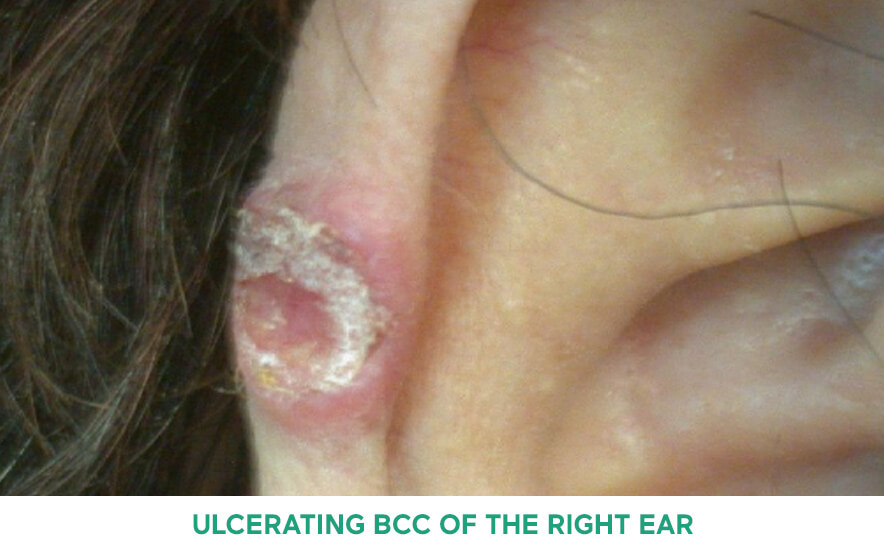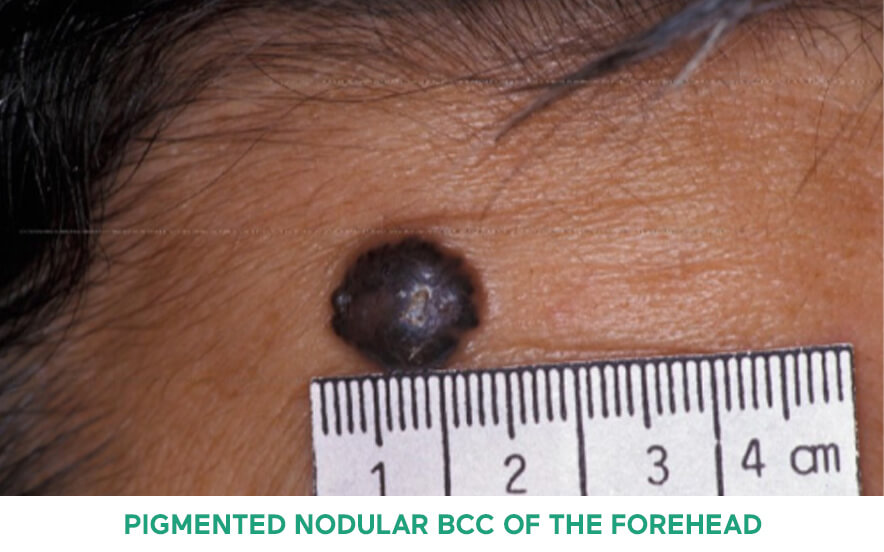Skin Cancer and Surgery
The first line treatment of skin cancer is always surgical excision and it is better
to treat early than late.
The three most common types of Skin Cancer
1. Basal cell carcinoma (BCC)
BCC, also known as “Rodent ulcer”, is very common and makes up 80-85% of all skin cancers. It usually develops on the face, nose and around the mouth of fair-skinned individuals. It may just be a red patch or shiny bump or an open sore or ulcer that does not heal.
In Asians, it often presents as a pigmented bump, giving the misleading impression that it is a mole. This type of cancer can be cured easily if treated early with surgery.
2. Squamous cell carcinoma (SCC)
SCC makes up 10% of all skin cancers and usually appears as a scaly patch or raised warty growth. It also has a high cure rate when found and treated early with surgery. In rare cases, if not treated, it can be deadly.
3. Melanoma
Melanoma makes up only 5% of all skin cancers. However, it is the most dangerous form of skin cancer and the leading cause of death from all skin diseases combined. It usually looks like a dark brown or black mole-like lesion with irregular edges. This type of skin cancer can occur anywhere on the body and when found early, can be cured with surgery. If ignored, it spreads throughout the body and can be fatal.
Risk factors of Melanoma include:
- Fair complexion
- Excessive childhood sun exposure and blistering sunburns
- Increased number of atypical looking moles
- A family history of melanoma
- Presence of a changing mole on the skin
One thing worthy of note is that more than 50% of melanomas are believed to arise from the skin without any preexisting pigmented lesion. Early detection of melanoma is our only hope of reducing mortality and achieving a cure. Emphasizing to high-risk patients about the need for regular full body mole / skin cancer check is very important.
ABCDE signs of a ”changing mole”
The warning signs of early melanoma follow the ABCDE criteria for a changing mole:
- Asymmetry
- Border irregularity
- Colour changes
- Diameter greater than 6 mm
- Enlarging rapidly
Superficial spreading melanoma with asymmetry(A), irregular border (B), hyperpigmented colour (C) and diameter greater than 6mm(D). This melanoma below was picked up incidentally.
A “changing mole” is the most common symptom of melanoma. More than 80% of patients with melanoma have observed such warning signs at the time of diagnosis. Symptoms, such as bleeding, itching, ulceration and pain in a pigmented lesion, also warrant evaluation.
If you have a family history or other risk factors of melanoma, it is important for you to schedule regular check-ups with a dermatologist for early detection of melanoma.
Treatment for Skin Cancer
The first line treatment of skin cancer is always surgical excision and it is better to treat early than late. A skin biopsy with laboratory analysis is necessary to confirm the clinical suspicion. Thereafter, your dermatologist will schedule a surgery to completely remove the skin cancer.
A wide excision surgery is necessary depending on the type of skin cancers you have. Further blood test and imaging studies may have to be done to detect if cancer has spread to other parts of the body. Chemotherapy or radiation therapy may sometimes be necessary as follow-up treatment.
Useful Link: Blog on What you need to know about Mole removal!
Dr Wong Soon Tee, a trained Dermatologist for Skin Cancer & Mole Management
In 1998–2000, Dr Wong Soon Tee was conferred the Commonwealth Fellowship by the Association of Commonwealth Universities (UK) to research on skin cancers at the Imperial Cancer Research Fund, Skin Tumour Laboratory. This has honed his skills and sharpness in picking up early skin cancer and removing them.
Dr Wong was trained in the UK for Dermatosurgery and Laser surgery and he has screened many patients for suspicious moles over 30 years as a dermatologist in NUH, Raffles Hospital and Assurance Skin Clinics. All his patients with skin cancer have been coming back to him yearly for skin cancer screening.
Make an Enquiry
Got questions? Fill up this form and our clinic staff will revert as soon as possible.
For faster response, call us at +65 6694 1121
Chat with our friendly clinic staff through Whatsapp!
Visit Us
Start your skin health restoration journey with us today!
Assurance Skin, Laser & Aesthetics
Mount Elizabeth Novena Specialist Centre
#10-22/23, 38 Irrawaddy Road ,
Singapore 329563
Mon, Tues, Wed, Fri: 9.00am-5.00pm;
Thurs, Sat: 9.00am-12.30pm;
Sun & Public Holidays: Closed
Dr. Wong Soon Tee
Consultant Dermatologist

Dr. Wong Soon Tee
Consultant Dermatologist
Care and Professionalism Refined by
Over 30 Years of Dermatology Experience
- MBBS, Yong Loo Lin School of Medicine, Singapore
- MRCP. Member of Royal College of Physicians, United Kingdom
- FAMS, Fellow of Academy of Medicine, Singapore
- Adjunct Assistant Professor, National University of Singapore
- Visiting Consultant, University Dermatology Division, National University Hospital
- Visiting Consultant, Aesthetic Plastic Surgery Centre, National University Hospital
Why Choose Us
-
Dr Wong connects well with his patients & he is a specialist with over 30 years of experience.
-
Our specialist listens & explains well to his patients on their skin issues and their queries.
-
We offer carefully curated FDA & HSA-approved treatments that give effective results.
-
Full financial counselling & adherence to MOH guidelines on the surgical fee.













